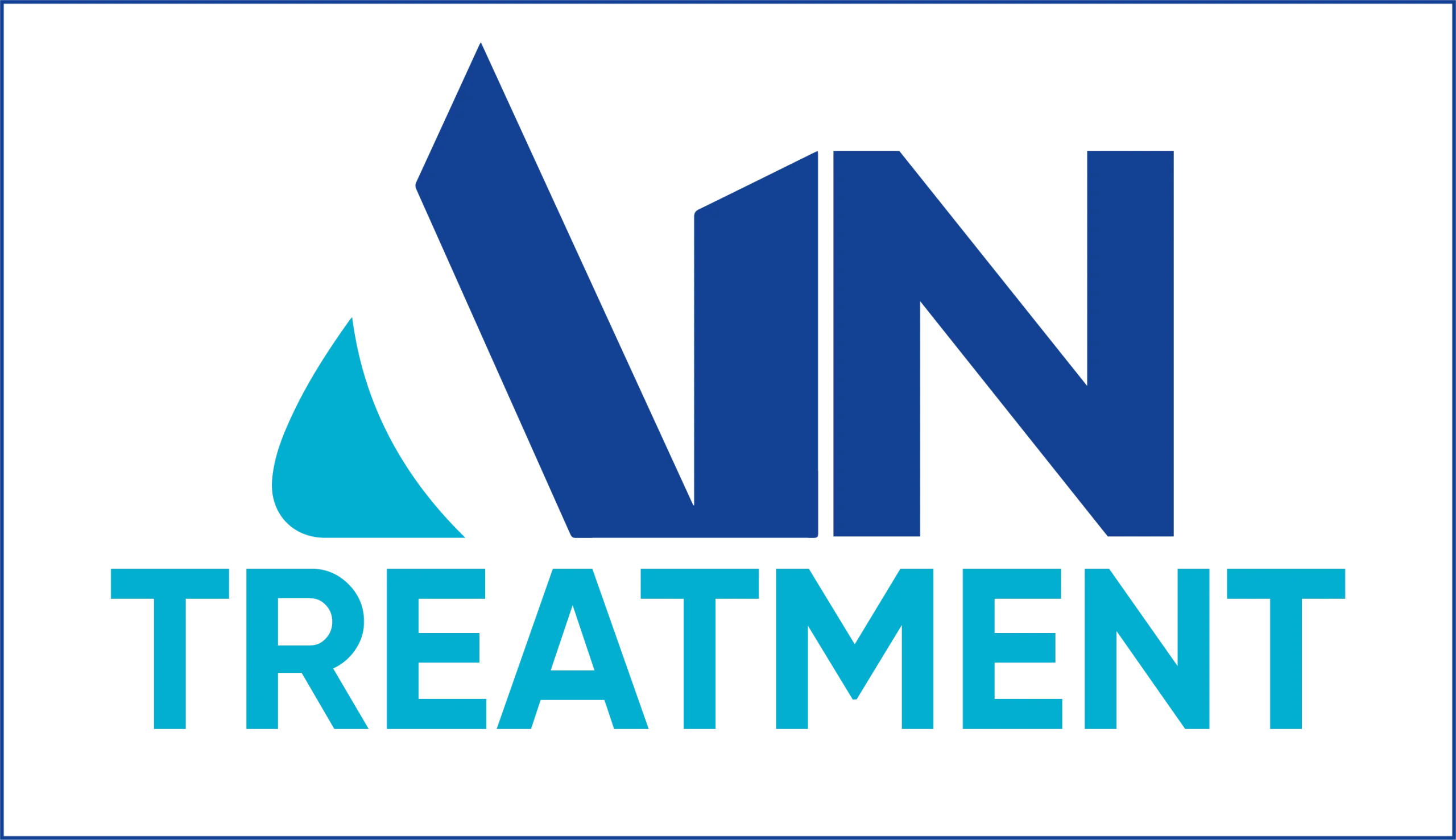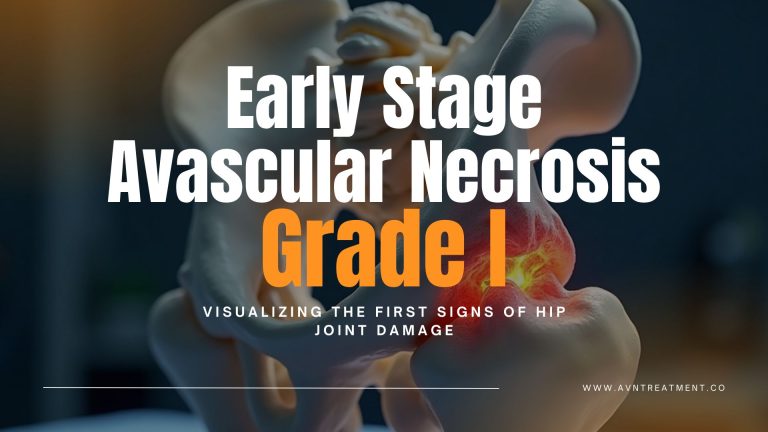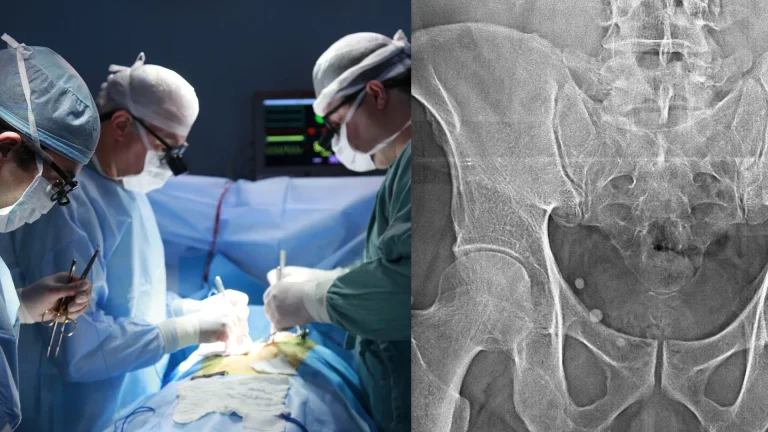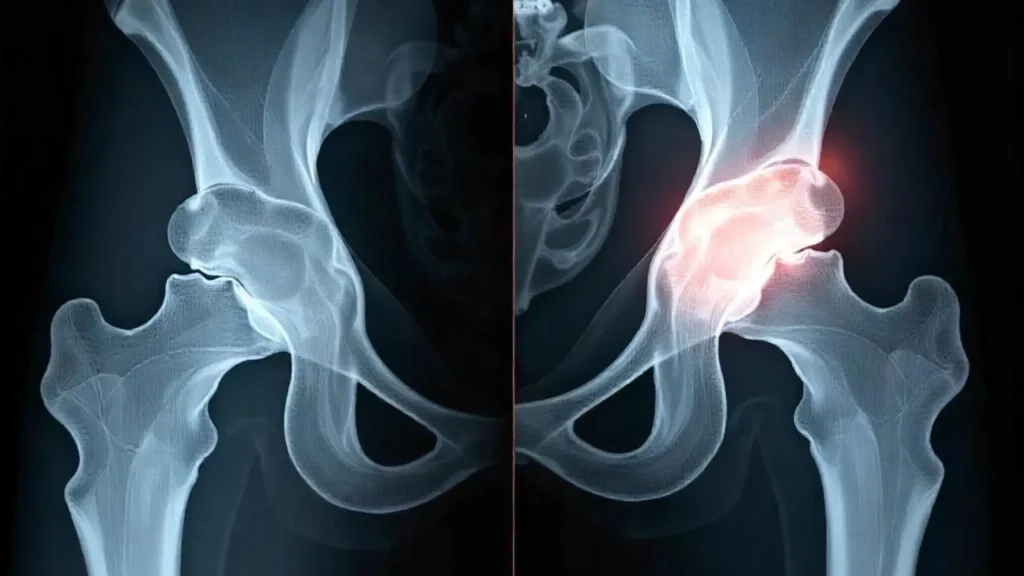
Introduction
Avascular Necrosis (AVN) is a serious health condition that damages bones, causing them to weaken and collapse. This occurs when blood supply to one or more bones is interrupted, leading to bone tissue death and eventually death of that bone itself. Though often associated with hip issues, Avascular Necrosis can impact other bones as well.
If left untreated, AVN can cause permanent damage, severe pain, and disability.
In this article, we will explore what AVN is, what causes it, the symptoms to look for, and the different treatments available. We’ll also take a closer look at some home remedies and alternative treatments, including physical therapy and yoga, that can help manage the condition.
1. What is Avascular Necrosis (AVN)?
Avascular Necrosis, also called Osteonecrosis, is a condition where the blood flow to a bone is reduced or stopped, causing the bone tissue to die. Over time, the bone may collapse and lead to severe pain, especially during physical activities. The most common area affected is the hip joint, but AVN can also affect the shoulders, knees, and other bones.+
Bones need a constant supply of blood to stay healthy. When the blood supply is interrupted, the bone loses its strength and can break down. This damage can occur slowly, and many people may not notice the problem at first.
2. Causes of AVN
Several factors can cause AVN. Some of the most common causes include:
a) Injury or Trauma
Fractures or dislocations, can damage blood vessels around an injured bone and reduce blood flow to that area of bone, leading to AVC formation. It’s an especially likely cause among people involved in serious accidents.
b) Long-Term Use of Steroids
Taking corticosteroids for a long time can increase the risk of AVN. These medications are often used to treat conditions like asthma, arthritis, or autoimmune diseases. Overuse can cause the blood vessels to narrow, affecting the bone.
c) Excessive Alcohol Consumption
Alcohol abuse may increase your risk of Avascular Necrosis. Alcohol can compromise blood flow to bones and lead to their destruction resulting in bone tissue death.
d) Medical Conditions
Certain diseases like lupus, HIV/AIDS, and sickle cell anemia can increase the risk of developing AVN. These conditions can affect blood flow and cause the bones to weaken.
e) Blood Clots and Other Circulation Problems
Blood clots or conditions affecting circulation may prevent oxygen from reaching bone tissue, leading to necrosis.
3. Symptoms of AVN
The symptoms of AVN can vary depending on which bone is affected and how severe the condition is. Some of the common signs include:
a) Pain
Pain is the most common symptom of AVN. The pain can start mild and get worse over time. It may feel like a dull ache or sharp pain, especially during movement.
b) Limited Range of Motion
As the bone weakens, the range of motion in the affected joint can decrease. For example, a person with AVN in the hip might find it difficult to move their leg.
c) Limping
Due to pain and stiffness, some people with AVN may develop a limp. This happens when the joint can’t move properly or when the person tries to avoid putting pressure on the affected area.
d) Swelling and Tenderness
In some instances, an area around an affected bone may become swollen and tender to touch. If this occurs for you, it is crucial that you see a physician immediately as early diagnosis can prevent further damage from happening.
4. Diagnosing AVN
Doctors use different methods to diagnose AVN. The most common tests include:
a) X-rays
X-rays are often the first imaging test used to look for changes in the bone. They can help detect early signs of AVN, such as bone collapse or changes in bone shape.
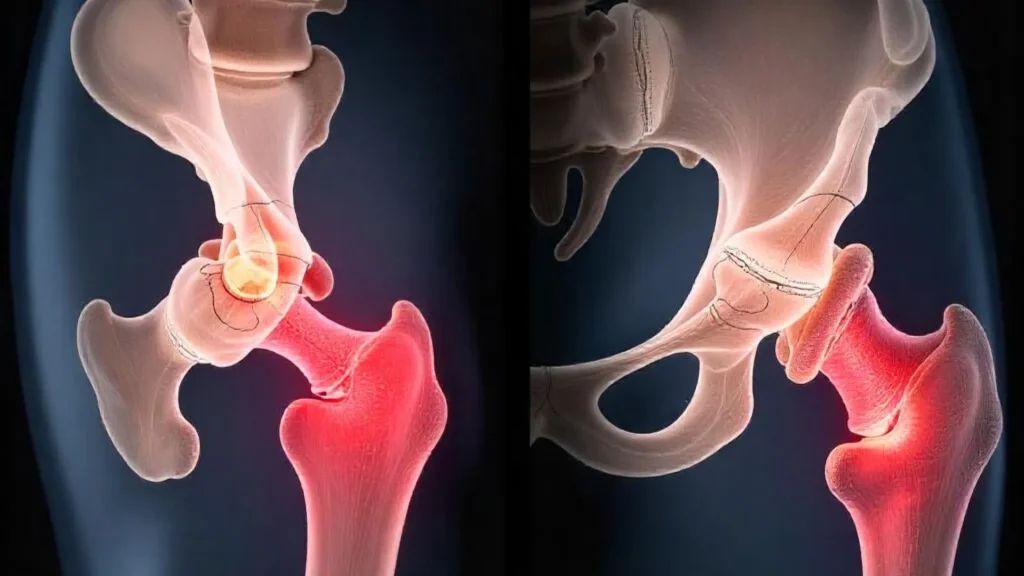
b) MRI (Magnetic Resonance Imaging)
An MRI provides a more detailed view of the bone and can help detect AVN in its early stages before it shows up on an X-ray.
c) CT Scan
A CT scan is another tool that can be used to get detailed images of the bones. It can be used in some cases when an MRI is not available.
d) Bone Scintigraphy (Bone Scan)
This test involves injecting a small amount of radioactive material into the body. It helps to highlight areas with poor blood flow, indicating potential AVN.
5. AVN Treatment: Medical and Surgical Options
Once AVN is diagnosed, treatment options are available to prevent further damage to the bone and improve quality of life. There are both medical and surgical treatments.
5.1 Medications
Medication may help alleviate both pain and inflammation. Common treatments include:
- Pain Relievers: Nonsteroidal anti-inflammatory drugs (NSAIDs) like ibuprofen can help manage pain and inflammation.
- Bisphosphonates: These are medications used to strengthen bones and slow down bone loss.
- Vasodilators: These drugs help widen blood vessels and improve blood flow to the bones.
- Anticoagulants: If blood clots cause the AVN, blood-thinning medications may be prescribed.
While medications can help manage the symptoms, they do not cure AVN or reverse the damage to the bone. In some cases, surgery may be needed.
5.2 Surgery: Types and Benefits
In severe cases, surgery may be necessary to treat AVN. Some common surgical options include:
- Core Decompression: This surgery involves removing a small part of the bone to relieve pressure and improve blood flow. It is often used in the early stages of AVN.
- Bone Grafting: A bone graft may be used to replace the damaged bone with healthy bone tissue, helping to restore the bone’s strength.
- Hip Replacement Surgery: For people with AVN in the hip, a hip replacement may be the best option. This involves replacing the damaged joint with an artificial one.
- Osteotomy: In this surgery, the bone is cut and realigned to reduce stress on the affected area.
While surgery can be effective, it is typically only used when other treatments have failed.
6. Non-Surgical Treatment Options for AVN
Not all cases of AVN require surgery. Non-surgical treatments can help manage the symptoms and prevent further damage to the bone.
6.1 Physical Therapy
Physical therapy is an important part of managing AVN. A trained physiotherapist can help you with exercises that strengthen the muscles around the affected joint, improve flexibility, and reduce pain. Therapy can also teach you how to move more efficiently to protect the joint from further damage.
6.2 Yoga and Stretching
Yoga can be an effective way of improving joint mobility and relieving pain associated with AVN in people. Certain yoga poses aim to strengthen muscles around affected joints while increasing flexibility; stretching can also relieve tightness and help improve movement.
6.3 Lifestyle Changes
Making certain lifestyle changes can help reduce the impact of AVN:
- Avoid High-Impact Activities: Activities like running or jumping can put too much pressure on the affected bone, so it’s best to avoid them.
- Use Mobility Aids: Crutches, a cane, or a walker can help reduce the load on the affected joint.
- Weight Management: Maintaining a healthy weight reduces stress on the bones and joints.
7. The Role of Diet in Managing AVN
A healthy diet plays an important role in managing AVN. Foods rich in calcium and vitamin D can help strengthen the bones and improve overall bone health. You should also include foods that reduce inflammation, such as:
- Leafy greens
- Fish like salmon and mackerel
- Nuts and seeds
- Fruits like berries and oranges
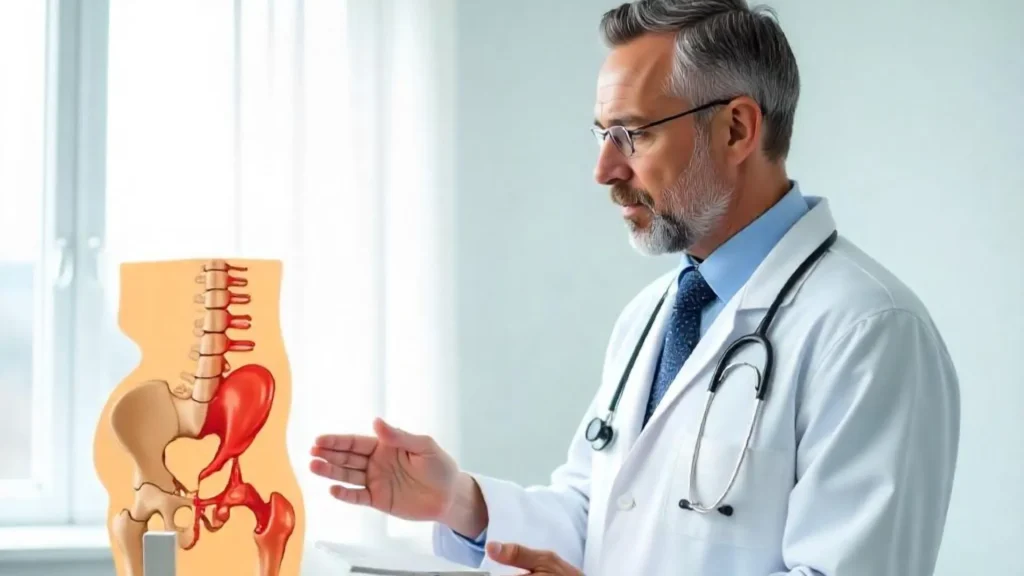
8. Natural Remedies for AVN
While natural remedies can’t cure AVN, some people find relief by using them alongside medical treatments. Common natural remedies include:
- Turmeric: Known for its anti-inflammatory properties, turmeric can help reduce swelling and pain.
- Ginger: Another natural anti-inflammatory, ginger may help relieve pain and improve mobility.
- Hot and Cold Compresses: Applying heat or cold to the affected area can help reduce pain and swelling.
9. Yoga for AVN: Benefits and Poses
Yoga has increasingly become recognized for its effectiveness in treating conditions like AVC. Yoga helps increase flexibility, reduce stress and strengthen muscles around an affected joint. Yoga poses that may benefit those suffering from AVC include:
- Child’s Pose: Helps stretch the hips and lower back.
- Downward Dog: Strengthens the shoulders and legs while improving flexibility.
- Pigeon Pose: Stretches the hip flexors and opens the hips.
Consult with a yoga instructor before starting, especially if you are new to the practice.
10. AVN Recovery: What to Expect
Recovery from AVN can take time. Timelines will depend on the severity and treatment used, as well as an individual’s overall health. Follow your physician’s advice and take things slowly; some individuals may see complete recovery while others will need ongoing management of their condition.
11. Prevention of AVN: Tips and Advice
Preventing AVN is not always possible, but there are steps you can take to reduce the risk:
- Avoid excessive alcohol consumption.
- Use steroids only when necessary and under the guidance of a doctor.
- Maintain a healthy diet and lifestyle.
- Seek treatment early if you have a medical condition that could lead to AVN.
12. AVN in India: What You Need to Know
India is seeing more cases of Avascular Necrosis due to the rising levels of alcohol consumption and long-term use of steroids for various health conditions. Although modern medical treatments and awareness about AVN have improved significantly over time, additional education and prevention efforts need to take place for optimal care and prevention of this condition.
Conclusion
Avascular Necrosis (AVN) is a serious condition that affects bones and joints, leading to pain and limited mobility. Early diagnosis and treatment are key in managing this condition effectively and limiting further damage; options may include medications, surgery or lifestyle modifications as ways of effectively managing it.
No, AVN cannot be completely cured, but early treatment can prevent further damage and improve quality of life.
Non-surgical treatments like physical therapy, yoga, and lifestyle changes can help manage the symptoms.
No, surgery is usually a last resort. Many people can manage AVN with medication, physical therapy, and lifestyle changes.
Yes, yoga can help improve flexibility, reduce pain, and strengthen the muscles around the affected joint.
The early signs include pain, stiffness, and a reduced range of motion in the affected joint.
